Twenty years of Mercedes-Benz SLR McLaren: a unique reunion
Mercedes-Benz and McLaren
Without McLaren, there would never have been a Mercedes-Benz SLR McLaren. The supercar emerged from the Formula One collaboration of Mercedes-Benz and McLaren. The SLR McLaren was developed by both parties, but ultimately production took place at McLaren. McLaren recognizes not only the car, but also the people who brought it to life, many of whom still work at McLaren.
Four special specimens
To celebrate 20 years of the SLR McLaren, four versions of the model came to Woking: an SLR Stirling Moss, an SLR from MSO, an SLR HDK and the SLR 722 GT Prototype. The foursome was on display at MTC Boulevard, alongside items from the car’s development story.
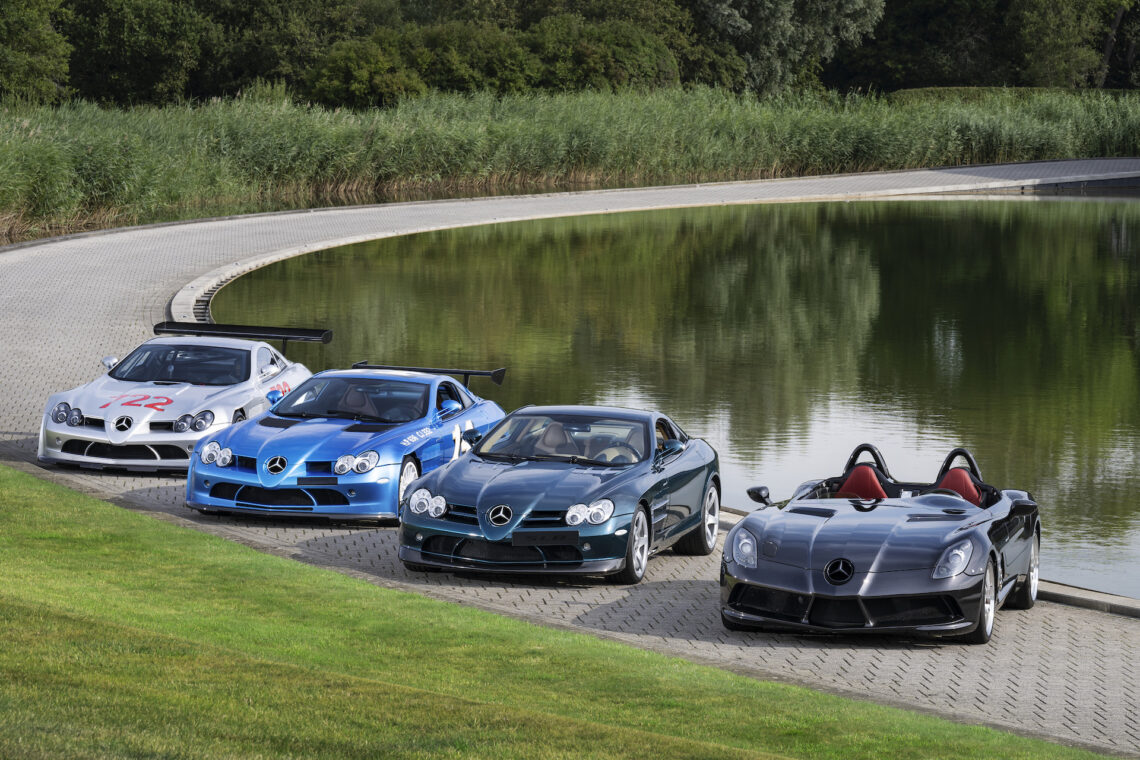
SLR Club
A visit to MTC by the SLR Club – an international group of Mercedes-Benz SLR McLaren owners – added even more color to the events, with the enthusiasts meeting some of the McLaren team working on the project.
Project 7
The Mercedes-Benz SLR McLaren project was announced at the 1999 British Grand Prix at Silverstone, with confirmation that McLaren would collaborate with Mercedes-Benz to bring to life the Mercedes-Benz SLR Vision Concept – shown earlier that year at the Detroit Auto Show. The car was developed under the name “Project 7.
McLaren and Mercedes-Benz were partners in Formula One between 1995 and 2009, during which McLaren won four F1 world championships (constructors’ champion in 1998, drivers’ champion in 1998, 1999 and 2008). In the Mercedes-Benz SLR McLaren – as in the F1 car – McLaren chassis development and carbon fiber technology is combined with Mercedes engine power.
The first Project 7 prototype was built by a team of ex-Formula 1 McLaren mechanics who then teamed up with automotive engineers to form the core team that would put the car into production. The SLR McLaren was the first car to be assembled by hand at the then newly opened MTC.
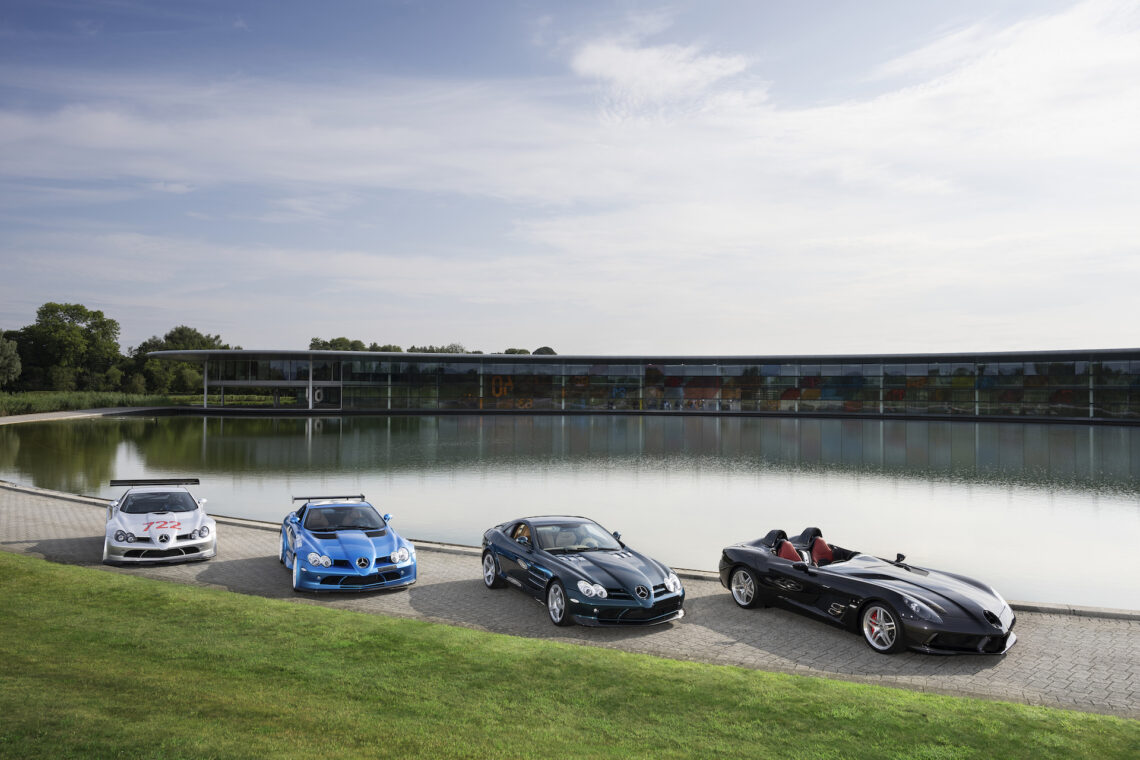
Performance Mercedes-Benz SLR McLaren
The Mercedes-Benz SLR McLaren uses a 5.5-liter supercharged V8 developed by Mercedes-AMG and placed in the middle of the car, just below the dashboard. The eight-pitter has an output of 626 hp and a whopping 780 Nm of torque. A five-speed automatic transmission drives only the rear wheels, good for 0-100 km/h acceleration in 3.8 seconds and a top speed of 325 km/h.
McLaren Edition SLR
Production of the SLR McLaren ended in December 2009, but that did not end McLaren’s involvement with the car. In 2010, the McLaren Edition SLR was conceived: an enhancement package for the Mercedes-Benz SLR McLaren, developed based on feedback from SLR owners. This package was developed by McLaren Special Operations (MSO), which had just opened at the time. This version of the SLR, limited to only 25 examples, had major body modifications with the adoption of a new, aerodynamically shaped front skirt with a larger front splitter, new side intakes, a larger rear wing and a revised rear diffuser, as well as lighter wheels. In addition to the changes, McLaren Special Operations revised the suspension and power steering.
SLR by MSO
In 2019, MSO introduced the SLR by MSO: a new comprehensive upgrade program based on owner feedback. The package included revised aerodynamics, weight-saving measures and new luxury features, such as special quilted leather upholstery. These are available as a total package or as individual elements.
SLR High Downforce Kit (HDK)
In May 2023, MSO completed the customer handover of the first-ever SLR High Downforce Kit (HDK) conversions. These cars come with body modifications directly inspired by the 722 GT racer, a track version of the car. With the front and rear track widths increased by 60 mm, the HDK cars have an even more imposing stance, emphasized by a wide body kit with flared wheel arches and a rear wing inspired by that of the McLaren F1 GTR. Weight was further reduced and exhaust volume increased by eliminating mufflers. MSO is producing a total of 12 SLR HDKs, all of which, incidentally, have already been sold.
Smart!
Although the car went out of production in 2009, MSO came up with ways to make it better time and time again. The most recent example is MSO’s HDK kit. In fact, McLaren kept coming up with new ways to still earn a little extra on the model. Because upgrades also have a value-enhancing effect on the car, owners are happy to pull out their wallets.




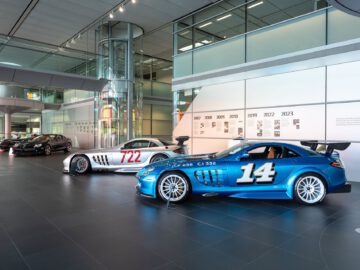

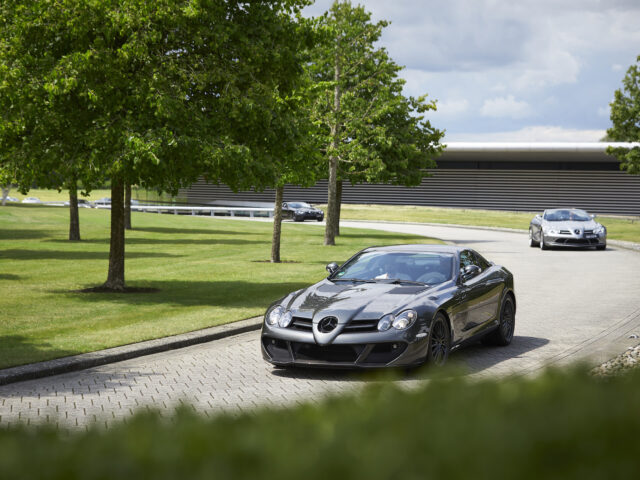
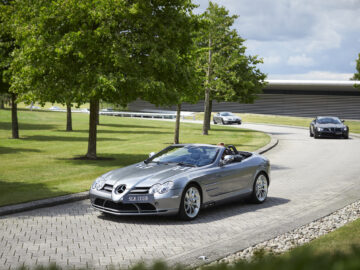
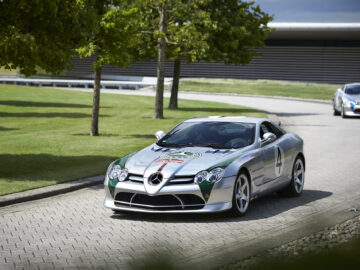

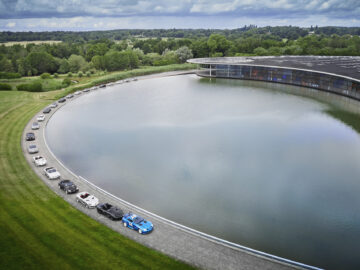
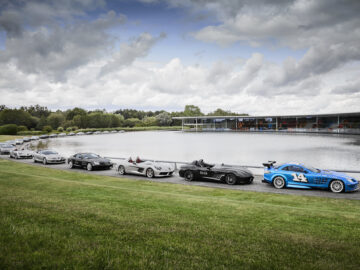
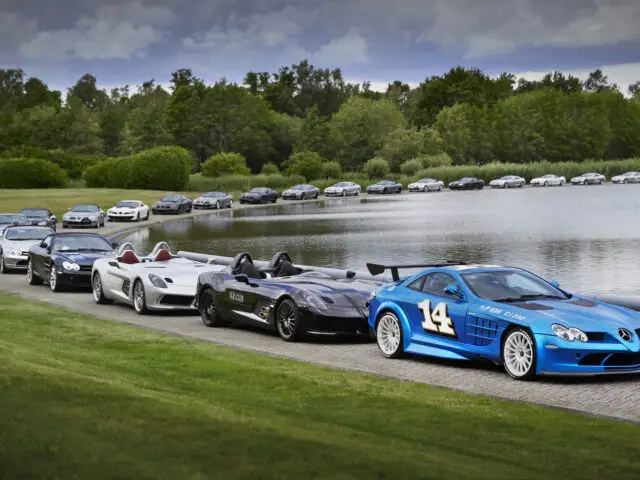
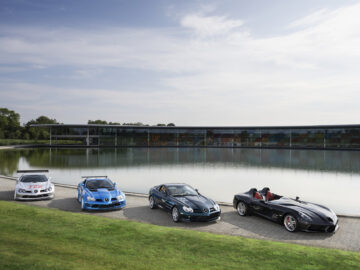
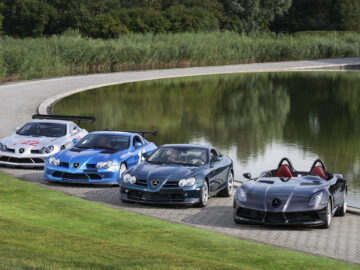
Numbers
The first Mercedes-Benz SLR McLaren customer car was delivered in the summer of 2004. A total of more than 2,000 were produced in all versions. Additional versions of the car included the 722 Edition Coupe, introduced in 2006. The 722 Edition pays tribute to Sir Stirling Moss and his victory in the 1955 Mille Miglia. The car is named after Moss’ number in the race. The version also received more power and further carbon fiber modifications. The output of the AMG engine increased to 650 hp with 800 Nm of torque. The extra power was accompanied by new front and rear carbon fiber splitters, as well as a revised and lowered suspension with stiffer springs, plus upgraded brakes. 150 customer cars were produced.
722 Edition Roadster
A year later, in 2007, the SLR got a Roadster variant with a folding fabric hood, which in turn formed the basis of another special 722 Edition: the 722 Edition Roadster. With the powertrain, chassis and aerodynamic changes of the 722 Edition Coupe, along with the electrically operated folding roof of the Roadster, another 150 customer cars were completed.
SLR Stirling Moss Edition
The final version of the Mercedes-Benz SLR McLaren was the SLR Stirling Moss Edition. This open-roof roadster used the same carbon-fiber monocoque and 5.5-liter V8 powertrain as the standard SLR, but with dramatic bodywork directly inspired by the 1955 Mille Miglia 300 SLR. Under the hood is the 650-hp 722 Edition engine. The SLR Stirling Moss Edition is extremely rare, with only 75 cars built.
Active aerodynamics
The SLR was an early pioneer of active aerodynamics in production street-legal cars. At the rear of the car, an adaptive wing provides additional downward pressure at speeds above 95 mph by adopting a 10-degree position. But the rear wing also acts as an air brake, tilting to a 65-degree angle during vigorous braking from speed for more drag, while also shifting the car’s balance more to the rear during braking for more stability.

